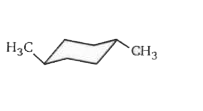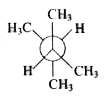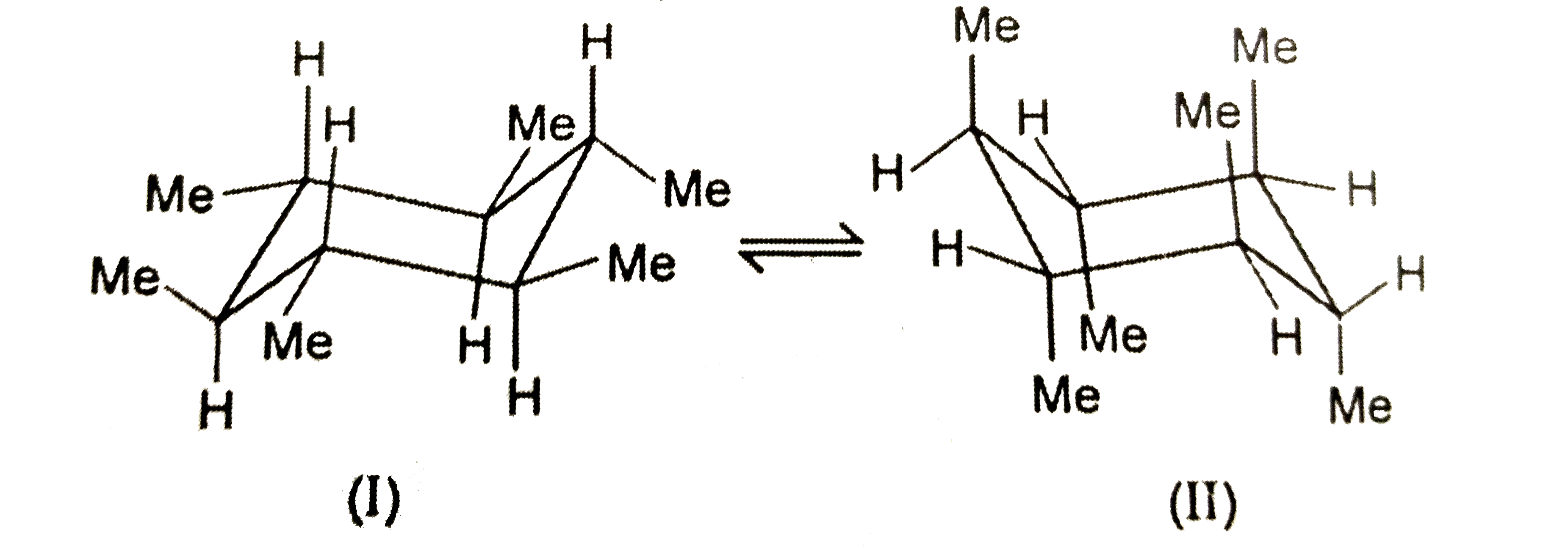Which is more stable, cis - or trans-1,2-dimethyl cyclobutane and whyh?
To determine which is more stable between cis- and trans-1,2-dimethylcyclobutane, we can analyze the molecular structures and the steric interactions present in each configuration.
1. Draw the Structures:
- Start by drawing the cyclobutane ring and placing the two methyl groups at the 1 and 2 positions.
- For the cis isomer, both methyl groups are on the same side of the ring.
- For the trans isomer, the methyl groups are on opposite sides of the ring.
2. Identify the Positions:
- In the cis configuration, one methyl group will be in an equatorial position and the other in an axial position.
- In the trans configuration, both methyl groups can occupy equatorial positions.
3. Analyze Steric Strain:
- The cis isomer has one methyl group in an axial position, which leads to increased steric strain due to 1,3-diaxial interactions (where axial substituents experience steric hindrance from other axial hydrogens).
- The trans isomer, with both methyl groups in equatorial positions, minimizes steric strain and avoids these unfavorable interactions.
4. Conclusion on Stability:
- Since the trans isomer has both methyl groups in equatorial positions, it experiences less steric hindrance and is therefore more stable than the cis isomer, which has increased steric strain due to the axial methyl group.
Final Answer:
Trans-1,2-dimethylcyclobutane is more stable than cis-1,2-dimethylcyclobutane due to lower steric strain, as both methyl groups can occupy equatorial positions in the trans configuration.
---
- Start by drawing the cyclobutane ring and placing the two methyl groups at the 1 and 2 positions.
- For the cis isomer, both methyl groups are on the same side of the ring.
- For the trans isomer, the methyl groups are on opposite sides of the ring.
- In the cis configuration, one methyl group will be in an equatorial position and the other in an axial position.
- In the trans configuration, both methyl groups can occupy equatorial positions.
- The cis isomer has one methyl group in an axial position, which leads to increased steric strain due to 1,3-diaxial interactions (where axial substituents experience steric hindrance from other axial hydrogens).
- The trans isomer, with both methyl groups in equatorial positions, minimizes steric strain and avoids these unfavorable interactions.
- Since the trans isomer has both methyl groups in equatorial positions, it experiences less steric hindrance and is therefore more stable than the cis isomer, which has increased steric strain due to the axial methyl group.
Trans-1,2-dimethylcyclobutane is more stable than cis-1,2-dimethylcyclobutane due to lower steric strain, as both methyl groups can occupy equatorial positions in the trans configuration.
Topper's Solved these Questions
- ALKANES AND CYCLOALKANESBOOK - CENGAGE CHEMISTRY ENGLISHCHAPTER - ALKANES AND CYCLOALKANESEXERCISE - SOLVED EXAMPLES
19 Videos
- ALKANES AND CYCLOALKANESBOOK - CENGAGE CHEMISTRY ENGLISHCHAPTER - ALKANES AND CYCLOALKANESEXERCISE - EXERCISES
24 Videos
- ALKENES AND ALKADIENESBOOK - CENGAGE CHEMISTRY ENGLISHCHAPTER - ALKENES AND ALKADIENESEXERCISE - Single correct Answer
14 Videos
Similar Questions
Knowledge Check
The stable form of trans-1, 4 dimethylcyclohexane is represented as:
A B
B C
C D
D
Which of the following will give a mixture of cis and trans-1,4-dimethyl cyclohexane, when undergo catalytic hydrogenation ?
A B
B C
C DBoth (a) and (b)
DBoth (a) and (b)The most stable conformation of 2, 3-dimethyl butane is :
A B
B C
C Dnone of these
Dnone of these
Which is more stable PCl5 or PCl3 ?
View SolutionWhich one is more stable and why?

View SolutionThe stable conformer (s) of trans−1−4− dimethyl] cyclohexane is/are:
View SolutionWhich would be the most stable conformation of trans-1-ethyl-3-methylcyclohexane ?
View SolutionThe total number of isomer including stereosisomers for 1,2-dimethyl cyclobutane is:
View Solution
